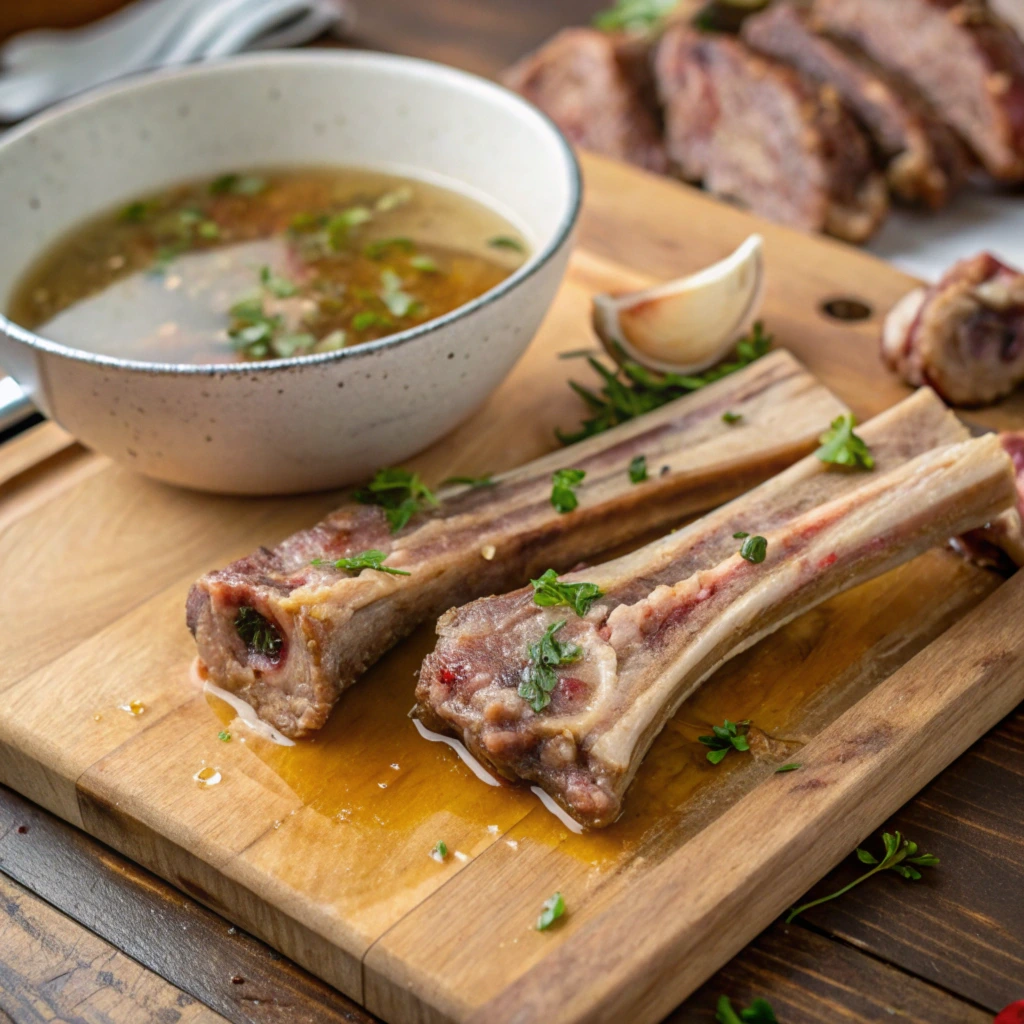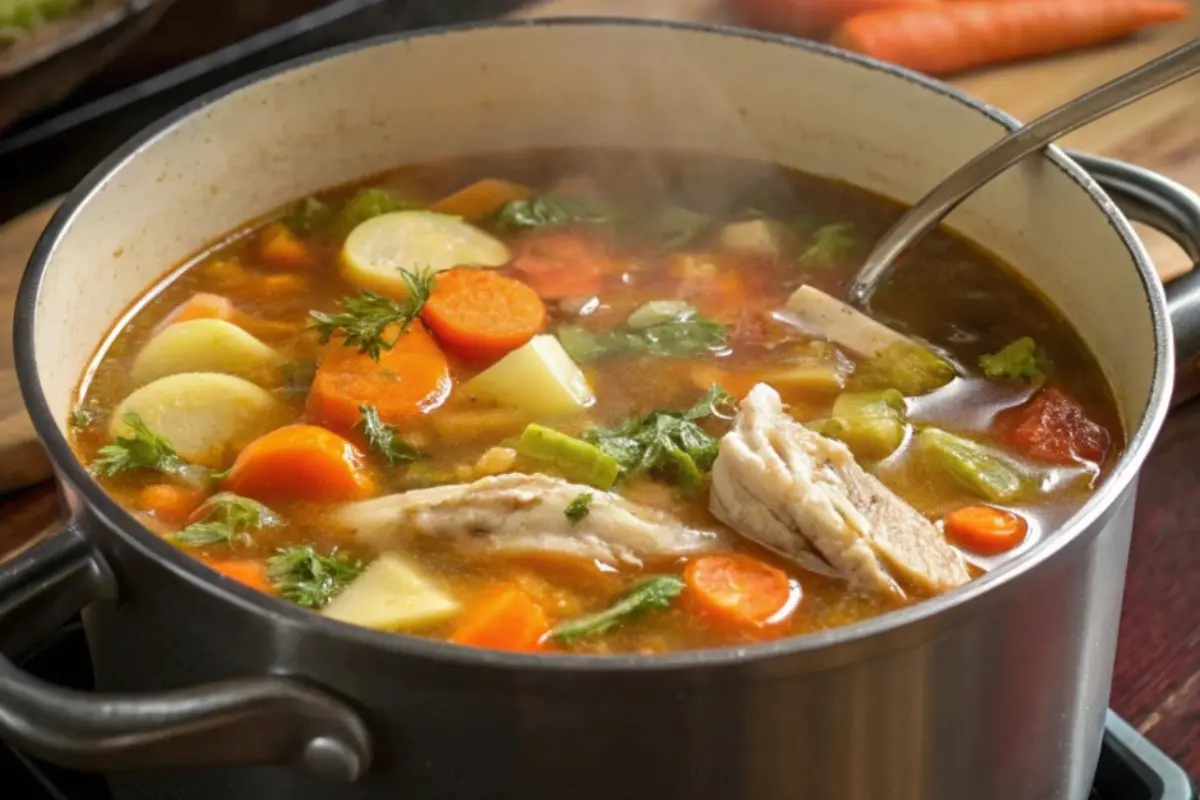Soup bones, long overlooked, are a nutritional powerhouse and a culinary staple in many cultures. From their role in enhancing broths to their impressive health benefits, these bones offer more than meets the eye. This article dives deep into the nutritional value, culinary uses, and health advantages of soup bones while also shedding light on potential risks and sustainable aspects. Whether you’re a seasoned chef or a curious home cook, you’ll discover why soup bones are good to eat and how they can enrich your meals and health.

Nutritional Value of Soup Bones
When it comes to nutrition, are soup bones good to eat for their health benefits? Absolutely! Packed with collagen, calcium, and essential minerals, soup bones provide a wealth of nutrients that promote joint and gut health. By simmering these bones, you extract compounds like gelatin, which supports skin elasticity and aids digestion. Many health-conscious cooks often ask, are soup bones good to eat on their own or only for broth-making? While the bones themselves may not be the most appealing to eat, the nutrients they release into broths and soups make them an invaluable addition to any diet. For those wondering about their broader culinary uses, soup bones are also rich in marrow and amino acids, contributing significantly to a balanced meal.
What Nutrients Are Found in Soup Bones?
Soup bones are packed with essential nutrients that make them an excellent addition to any diet. They are rich in calcium, magnesium, and phosphorus, vital minerals that support bone strength and development. The marrow within these bones is loaded with healthy fats, iron, and vitamins A and K, providing a dense nutritional punch.
Additionally, soup bones contain amino acids like glycine and proline, which play a crucial role in collagen production. These elements not only support joint and skin health but also contribute to overall well-being.
The Importance of Collagen and Gelatin
When soup bones are simmered for hours, the collagen in the bones and connective tissues transforms into gelatin—a nutrient powerhouse. Gelatin is known to improve digestion, strengthen hair and nails, and support skin elasticity. This is why bone broth, made from soup bones, is often touted as a beauty and wellness elixir.
Moreover, gelatin is an excellent source of glutamine, an amino acid that promotes gut health by repairing the intestinal lining. For those with digestive issues, soups made from bones can offer soothing relief.
Vitamins and Minerals in Bone Tissue
Soup bones provide a concentrated source of micronutrients essential for health. For instance, the marrow is abundant in zinc, a mineral that boosts the immune system, and omega-3 fatty acids, known for their anti-inflammatory properties. Additionally, the slow cooking process used to prepare soups or broths extracts trace elements like potassium, which aids in muscle function and blood pressure regulation.
But are soup bones good to eat beyond just their nutritional contributions? Absolutely! When properly cooked, these bones release life-sustaining nutrients into the broth, transforming your meals into something both delicious and incredibly healthy. For those still asking, are soup bones good to eat in a broader sense, their versatility in enhancing flavor and nutritional value makes them indispensable in the kitchen. Incorporating soup bones into your meals ensures you’re not just cooking for flavor but also for essential nourishment. These humble ingredients, often overlooked or discarded, are a shining example of how simple items can elevate both the taste and health benefits of your dishes.
Culinary Uses of Soup Bones
How Soup Bones Enhance Flavor in Broths
Soup bones are a secret weapon in the kitchen, adding layers of rich flavor and depth to broths and stocks. When simmered slowly, the bones release collagen, marrow, and minerals, creating a savory base that elevates soups, stews, and sauces. This process, known as deglazing, unlocks a flavor profile that’s impossible to achieve with just vegetables or store-bought broths.
Moreover, the fatty marrow inside soup bones creates a silky texture that coats the palate, making dishes feel more indulgent. Whether you’re preparing a hearty beef stew or a delicate consommé, soup bones are an irreplaceable ingredient for culinary success.
Popular Dishes Made with Soup Bones
Soup bones are used across cuisines to create signature dishes like Vietnamese pho, French pot-au-feu, and American beef noodle soup. These dishes rely on the intense flavor of bone-based broths to shine.
Additionally, soup bones serve as the foundation for bone broth, a health-boosting drink that’s become a global sensation. Some home cooks even roast bones before simmering to intensify their flavors, making them ideal for hearty recipes like ramen or osso buco.
Tips for Preparing and Cooking Soup Bones
To get the most from soup bones, it’s important to prepare them correctly. Start by blanching the bones to remove impurities, which ensures a clear broth. Roasting the bones before simmering can bring out their natural sweetness and add depth to the flavor.
Simmering soup bones for at least 8–12 hours allows collagen and nutrients to fully extract, creating a nutrient-rich broth. Adding acid, such as vinegar or lemon juice, during cooking helps draw out minerals like calcium, ensuring your soup is as nutritious as it is delicious.
Health Benefits of Consuming Soup Bones
Benefits for Joint and Bone Health
Soup bones are an excellent source of collagen and gelatin, which are essential for maintaining joint health. These compounds help cushion joints, reduce stiffness, and even alleviate symptoms of arthritis. Moreover, the minerals extracted from soup bones—like calcium, magnesium, and phosphorus—are vital for maintaining strong, healthy bones.
Regular consumption of broth made from soup bones can also promote cartilage repair, making it a go-to remedy for athletes or anyone with joint pain. It’s like giving your bones a nutritional tune-up.
Role in Gut Health and Digestion
The gelatin derived from soup bones is a game-changer for gut health. By repairing the intestinal lining, it helps reduce inflammation and improve nutrient absorption. People with conditions like leaky gut or IBS often turn to bone broth for its soothing and healing properties.
Glycine, an amino acid found in bones, also plays a significant role in digestion. It stimulates the production of stomach acid, which aids in breaking down food efficiently. A bowl of soup made from bones isn’t just comforting—it’s a digestive ally.
Anti-inflammatory Properties
The anti-inflammatory effects of soup bones come from their rich blend of nutrients, including omega-3 fatty acids, amino acids, and trace minerals. These elements work together to reduce inflammation throughout the body, easing chronic conditions like arthritis or autoimmune disorders.
What’s more, bone marrow from soup bones contains high levels of conjugated linoleic acid (CLA), which has been shown to fight inflammation and support heart health. Adding soup bones to your meals isn’t just about flavor—it’s about fueling your body with natural, health-boosting ingredients.
Potential Risks and Considerations
Safety Concerns of Eating Bones Directly
While soup bones are packed with nutrients and flavor, eating them directly poses risks. Small bone fragments can splinter during cooking, creating sharp edges that may harm the digestive tract if swallowed. To avoid such hazards, it’s best to strain broths and soups thoroughly before serving.
Additionally, overcooking bones can release excessive amounts of heavy metals, like lead, into the broth. Though rare, it’s advisable to use organic or well-sourced bones to reduce this risk.
Allergies or Sensitivities to Bone Derivatives
Some individuals may experience allergic reactions to compounds found in bones, such as collagen or marrow. Symptoms might include skin rashes or digestive upset. If you’re new to consuming bone-based broths, start with small portions to assess tolerance.
Addressing Overconsumption of Bone Marrow
Bone marrow is rich in healthy fats, but consuming it in large quantities can lead to excess calorie intake and imbalances in your diet. Moderation is key, ensuring you enjoy the health benefits without overindulging. Balancing your meals with vegetables and lean proteins creates a more holistic nutritional profile.
Economic and Sustainable Aspects
Affordability of Soup Bones for Meals
Soup bones are incredibly affordable, making them an ideal choice for budget-friendly cooking. But their low cost doesn’t mean they skimp on value—they’re nutrient-dense and versatile, making them a frugal option for creating flavorful dishes.
Using soup bones also helps stretch your grocery budget. For instance, a single batch of bone broth can serve as the base for multiple meals, from soups to sauces.
Reducing Food Waste through Bone Utilization
Using soup bones aligns with sustainable cooking practices. Instead of discarding bones, they’re repurposed into delicious broths, minimizing food waste. This practice not only benefits your wallet but also helps the environment by reducing overall waste.
If you’re looking for more ways to reduce food waste in your kitchen, visit Soup Bones Recipes and Tips for creative ideas.
Ethical Sourcing of Soup Bones
When choosing soup bones, opt for ethically sourced products whenever possible. Bones from grass-fed or pasture-raised animals tend to be richer in nutrients and free from harmful additives. Supporting local farmers and organic practices ensures your meals are not only tasty but also responsibly made.
FAQs About Soup Bones
Can You Eat Soup Bones Directly?
While soup bones are excellent for making broths, eating them directly is not always safe. Cooking softens them slightly, but bones remain hard and can splinter, posing risks to your digestive system. However, the marrow inside the bones is edible and highly nutritious, offering a rich source of healthy fats and vitamins.
For a safer option, stick to consuming the broth or strained soups made from the bones, which capture all the nutrients without the hazards.
How Long Should Soup Bones Be Cooked?
Soup bones should be cooked slowly over low heat for at least 8–12 hours. This lengthy cooking time ensures the maximum release of nutrients like collagen, calcium, and gelatin into the broth. Adding a splash of vinegar during cooking helps break down the bones and extract minerals.
If you’re in a time crunch, pressure cooking can speed up the process while still delivering a nutrient-rich broth. For detailed tips on cooking soup bones, explore Soup Bones Recipes and Tips.
What Are the Best Soup Bones to Use?
The best soup bones depend on your recipe and nutritional goals. Beef femur bones are excellent for a rich, flavorful broth, while chicken necks and backs create a lighter, more delicate soup. Pork bones can also add a unique taste to certain dishes.
Regardless of the type, always prioritize high-quality, organic bones to ensure a healthier and cleaner broth.
Wrapping Up the Benefits of Soup Bones
Soup bones are much more than a cooking ingredient; they represent a gateway to healthier meals, richer flavors, and more sustainable cooking practices. As we reflect on their numerous benefits, it’s clear that incorporating soup bones into your kitchen routine is not just about creating delicious dishes but also about embracing a more mindful approach to food.
Why Soup Bones Deserve a Spot in Your Pantry
Soup bones have long been celebrated for their versatility and nutrient-rich profile, but you may wonder, are soup bones good to eat directly or only as a base for broths? These humble yet powerful ingredients are packed with collagen, gelatin, and essential minerals, making them not just a flavor enhancer but also a significant health booster.
For those still questioning, are soup bones good to eat after being cooked for hours, the answer is an emphatic yes. Slow cooking helps extract vital nutrients like calcium and magnesium while breaking down connective tissues to release gelatin. This process supports joint health, improves digestion, and adds a richness that enhances any dish. Whether used in broths, soups, or stews, soup bones provide depth and nutrition that processed alternatives simply cannot replicate.
Incorporating Soup Bones into Everyday Meals
Adding soup bones to your meal plan doesn’t require a complete overhaul of your cooking routine. Start small by making a batch of bone broth over the weekend and using it throughout the week as a soup base, a cooking liquid for grains, or even a warm beverage to sip.
If you’re looking for inspiration, dishes like Vietnamese pho, Italian brodo, or French pot-au-feu are classic recipes that showcase the flavor and benefits of soup bones. By using a variety of bones—beef, chicken, or pork—you can experiment with different tastes and textures to find your favorites.
A Sustainable Choice for a Healthier Planet
In addition to the personal health benefits, using soup bones is a sustainable practice that contributes to reducing food waste. Instead of discarding leftover bones, you’re giving them a second life by turning them into nutrient-rich broth. This practice aligns with environmentally conscious cooking and can inspire others to adopt similar habits.
Moreover, supporting local farmers or sourcing bones from ethically raised animals ensures that your cooking choices have a positive impact on the environment. With a little effort, you can turn a simple pot of broth into a meaningful step toward sustainable living.

